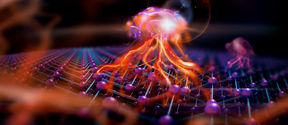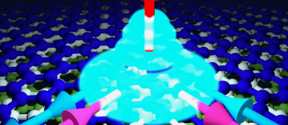A new artificial material mimics quantum entangled rare earth compounds
By combining two-dimensional materials, researchers create a macroscopic quantum entangled state emulating rare earth compounds

Professor Jose Lado was awarded early career prize. The award recognizes the talents of exceptional young researchers who are making a significant contribution to their respective field of research. The runner-up prize was awarded to Prof. Lado by Deutsche Physikalische Gesellschaft and Institute of Physics through New Journal of Physics (NJP).
Jose Lado has influential contributions to the field of two-dimensional magnetic materials and emergent correlated states in twisted van der Waals heterostructures.
Van der Waals materials are layered materials, with strong bonds across each layer but weak bonds – van der Waals forces – between layers. In twisted van der Waals heterostructures the rotation angle between layers changes smoothly and continuously. This opens ways for example towards tunable unconventional superconductors that might be applied to quantum computers and other quantum devices.
‘Engineering van der Waals materials represents one of the most disruptive strategies to generate exotic artificial quantum matter,’ says Prof. Lado, who leads the Correlated Quantum Materials (CQM) group at the Department of Applied Physics.
The CQM group focuses on designing quantum materials showing radically new quantum properties, especially aiming at states of matter that have not been observed in nature so far. For this goal, the CQM group brings together techniques ranging from theoretical physics methodologies, quantum materials methods, tensor-network and neural-network algorithms, and, in the near future, quantum computing algorithms.
In 2021, Prof. Lado’s group provided the first theoretical proposal of an exotic state of matter in artificial van der Waals materials, known as a heavy-fermion state. A heavy fermion is a particle – in this case an electron – that behaves like it has a lot more mass than it actually does. Furthermore, Prof. Lado’s group, together with Prof. Peter Liljeroth’s group at Aalto, provided the first experimental demonstration of a heavy-fermion state in an artificial van der Waals material. These theoretical and experimental findings provide for the first time a platform to explore heavy-fermion phenomena in artificial van der Waals materials, not relying on rare earth elements as conventional heavy fermion compounds.
Prof. Lado finishes by saying, ‘We now have the capability of generating radically new universes for quantum particles in materials, allowing us to explore exotic physics that have never been observed in nature. The design of artificial quantum materials represents one of the most thriving and disruptive directions in physics, with ultimately groundbreaking impacts both in fundamental science and quantum technologies.’


By combining two-dimensional materials, researchers create a macroscopic quantum entangled state emulating rare earth compounds

A new paper has shown it is possible to make heavy fermions in subtly modified graphene, which is much cheaper and safer

By combining ferromagnets and two rotated layers of graphene, researchers open up a new platform for strongly interacting states using graphene’s unique quantum degree of freedom

The newest theoretical physics professor at Aalto calculates what we need to do to create electronic states that can’t otherwise exist in nature, and how we can harness them for quantum computing


